The Indian Space Research Organisation (ISRO) is the primary space agency of the Indian government. ISRO is amongst the six largest government space agencies in the world, along with NASA, RKA, ESA, CNSA and JAXA. Its primary objective is to advance space technology and use its applications for national benefit.
Established in 1969, ISRO formerly known as Indian National Committee for Space Research (INCOSPAR). Headquartered in Bangalore, ISRO is under the administrative control of the Department of Space, Government of India.
History
1960-1970
Dr. Vikram Sarabhai was the founding father of the Indian space program, and is considered a scientific visionary by many, as well as a national hero. After the launch of Sputnik in 1957 he recognized the potential that satellites provided. India’s first prime minister, Jawaharlal Nehru, who saw scientific development as an essential part of India’s future, placed space research under the jurisdiction of the Department of Atomic Energy in 1961. The DAE director Homi Bhabha, who was father of India’s atomic programme, then established the Indian National Committee for Sapce Research (INCOSPAR) with Dr. Sarabhai as Chairman in 1962.
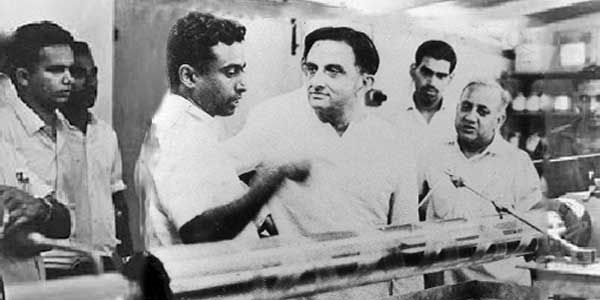
The Indian Rohini programme continued to launch sounding rockets of greater size and complexity, and the space programme was expanded and eventually given its own government department, separate from the Department of Atomic Energy. On August 15th 1969 the Indian Space Research Organisation (ISRO) was created from the INCOSPAR programme under the DAE, continued under the Space Commission and finally the Department of Space, created in June of 1972.
1970-1980
In the 1960s Sarabhai had taken part in an early study with NASA regarding the feasibility of using satellites for applications as wide as direct television broadcasting, and this study had found that it was the most economical way of transmitting such broadcasts. Having recognized the benefits that the satellites could bring to India from the very start, Sarabhai and the ISRO set about designing and creating an independent launch vehicle, capable of launching into orbit, and providing the valuable experience needed for the construction of larger launch vehicles in future. Recognizing the advanced capability India had in building solid motors with the Rohini series, and that other nations had favoured solid rockets for similar projects, the ISRO set about building the technology and infrastructure for the Satellite Launch Vehicle (SLV). Inspired by the American Scout rocket, the vehicle would be a four-stage all-solid vehicle.
Aryabhata – India’s first satellite
Meanwhile, India began developing satellite technology anticipating the remote sensing and communication needs of the future. India concentrated more on practical missions, directly beneficial to people instead of manned space programs or robotic space explorations. The Aryabhata satellite, launched in 1975 from Kapustin Yar using a Soviet Cosmos-3M launch vehicle, was India’s first satellite.
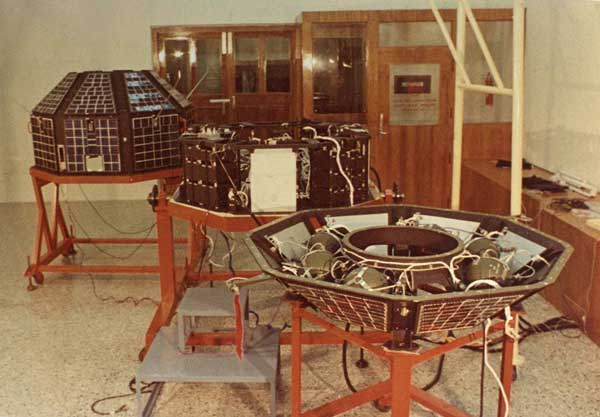
SLV – India’s first satellite launch vehicle
By 1979 the SLV was ready to be launched from a newly-established second launch site, the Satish Dhawan Space Centre (SDSC). The first launch in 1979 was a failure, attributed to a control failure in the second stage. By 1980 this problem had been worked out. The first indigenous satellite launched by India was called Rohini-1.
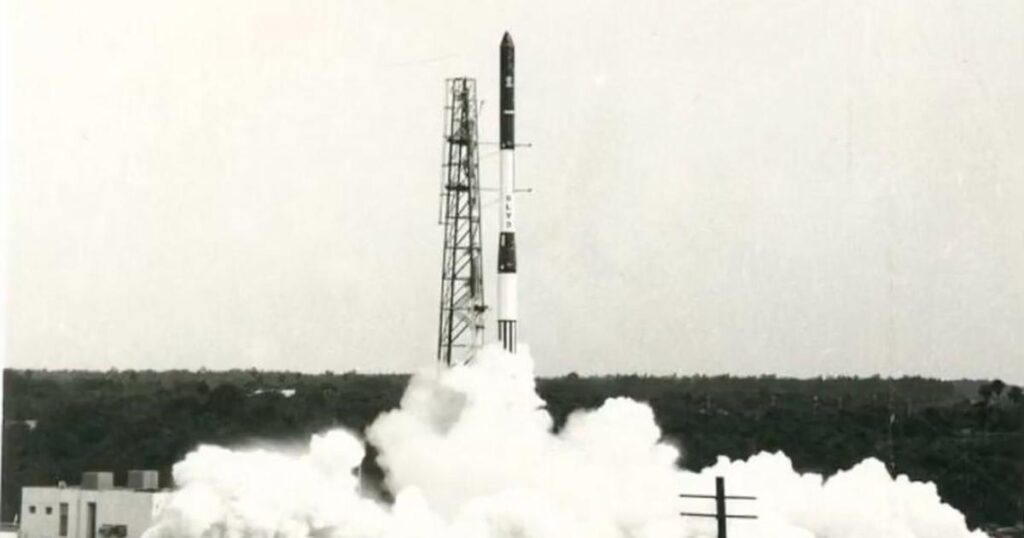
1980-1990
Following the success of the SLV, ISRO was keen to begin construction of a satellite launch vehicle that would be able to put truly useful satellites into polar orbits. Design of the Polar Satellite Launch Vehicle (PSLV) was soon underway. This vehicle would be designed as India’s workhorse launch system, taking advantage of both old technology with large reliable solid-stages, and new liquid engines. At the same time, it was decided by the ISRO management that it would be prudent to develop a smaller rocket, based on the SLV, that would serve as a testbed for many of the new technologies that would be used on the PSLV. The Augmented Satellite Launch Vehicle (ASLV) would test technologies like strap-on boosters and new guidance systems, so that experience could be gained before the PSLV went into full production.
Eventually, the ASLV was flight tested in 1987, but this launch was a failure. After minor corrections, another launch was attempted in 1988, this launch again failed, and this time a full investigation was launched into the cause, providing valuable experience, specifically because the ASLV’s failure had been one of control – the vehicle could not be adequately controlled on removal of the stabilizing fins that were present on the SLV, so extra measures like improved maneuvering thrusters and flight control system upgrades were added. The ASLV development had also proven useful in the development of strap-on motor technology.
1990-early 21st Century
It was not until 1992 that the first successful launch of the ASLV took place. At this point the launch vehicle, which could only put very small payloads into orbit, had achieved its objective. In 1993 the time had come for the maiden flight of the PSLV. The first launch was a failure. The first successful launch took place in 1994, and since then, the PSLV has become the workhorse launch vehicle – placing both remote sensing and communications satellites into orbit, creating the largest cluster in the world, and providing unique data to Indian industry and agriculture. Continual performance upgrades have increased the payload capacity of the rocket significantly since then.
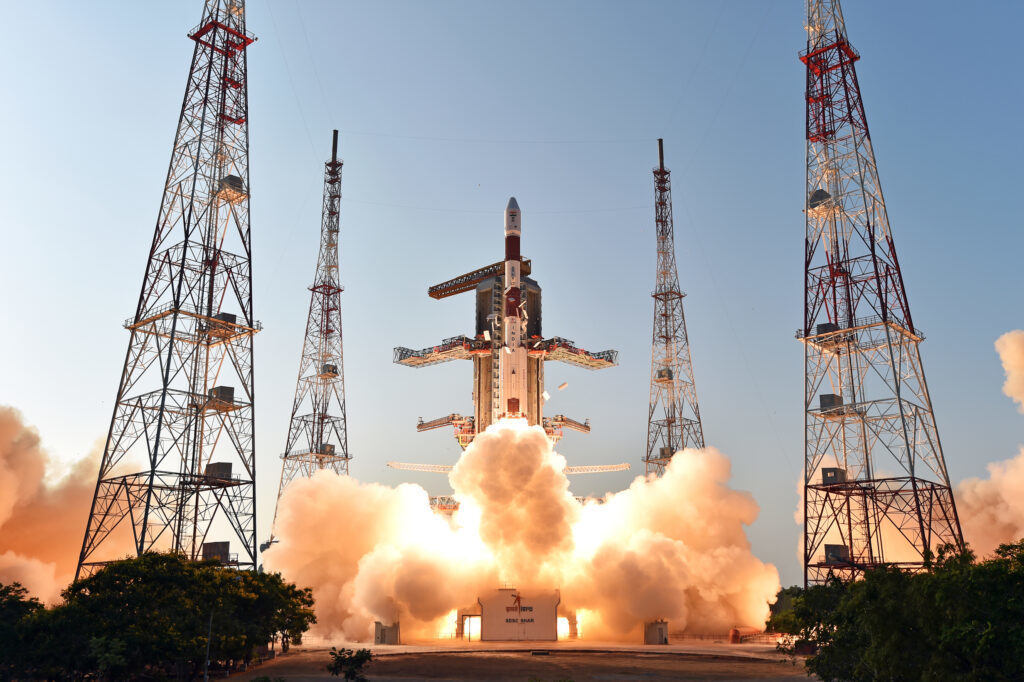
Under pressure, Glavkosmos halted the transfer of the associated manufacturing and design technology to India. Until then, ISRO had not been affected by technology transfer restrictions thanks to the political foresight of Sarabhai in indigenizing technology. However, elements of the ISRO management cancelled indigenous cryogenic projects in anticipation of the Russian deal. Instead of canceling the deal, Russia agreed to provide fully built engines instead, and India began developing an indigenous cryogenic engine to replace them, in the GSLV-II. There is still some controversy over the issue of the cryogenic engine acquisition, with many pointing to the decision to cancel indigenous projects as being a grave mistake – India would have likely had a fully indigenous engine operating by the time the GSLV launched if indigenous development had started from day one. Despite this one uncharacteristic slip in an otherwise extremely successful programme, and the loss of potential payload capacity over the decade that occurred as a result, ISRO pressed on.
After US refused to help India with Global Positioning System (GPS) during Kargil war, ISRO was induced to develop its own satellite navigation system IRNSS which is now expanding further.
Currently the most powerful Indian launch vehicle in operation; the first development flight of the GSLV took place in 2001. The program’s benefits have been scrutinized due to frequent payload cutbacks and delays. The indigenous cryogenic engine for the GSLV’s upper stage was tested in 2007. ISRO has reconsidered the effectiveness of the GSLV for the needs of the 2000-2010 decade and began development of an indigenous and new heavy launch vehicle, GSLV III. The latter is not related to the GSLV-I/II and will be based around the proven format of liquid main stages and two solid strap-on boosters. It will resemble the Ariane 5 and other modern launchers and will have sufficient payload capacity for manned spaceflight. The inaugural flight is scheduled for 2008
In 2003 when China sent humans into space, prime minister Atal Bihari Vajpayee urged scientists to develop technologies to land humans on Moon and Indian programs to send missions to Moon, other planets and sending humans to space came into existence soon. ISRO launched Chandrayaan-1 in 2008, which was world’s first probe to verify the presence of water on the Moon and Mars Orbiter Mission in 2013 which was first Asian spacecraft to enter Martian orbit and India being first country to do so in maiden attempt. Subsequently, cryogenic upper stage for GSLV rocket operationalised making India sixth country to have full launch capabilities and a new heavier-lift launcher GSLV Mk III was introduced in 2014 for heavier satellites and enabling human space missions. Since then, development of bigger rockets, more advanced satellites and spacecrafts has been going on.

ISRO’s Launch Vehicles
| Launchers | Status |
| Satellite Launch Vehicle | Retired |
| Augmented Satellite Launch Vehicle | Retired |
| Polar Satellite Launch Vehicle | Operational |
| Geosynchronous Satellite Launch Vehicle Mark II (GSLV Mk II) | Operational |
| Geosynchronous Satellite Launch Vehicle Mark III (GSLV Mk III) | Operational |
| Sounding Rockets | Operational |
| Reusable Launch Vehicle (RLV) | Upcoming |
| Scramjet Engine | Upcoming |
| Small Satellite Launch Vehicle (SSLV) | Upcoming |
ISRO’s Prominent Missions
Chandrayaan-1
Chandrayaan-1 was India’s first lunar probe. It was launched by the Indian Space Research Organisation on 22 October 2008, and operated until August 2009. The mission included a lunar orbiter and an impactor. The mission was a major boost to India’s space program, as India researched and developed its own technology in order to explore the Moon. The vehicle was successfully inserted into lunar orbit on 8 November 2008.
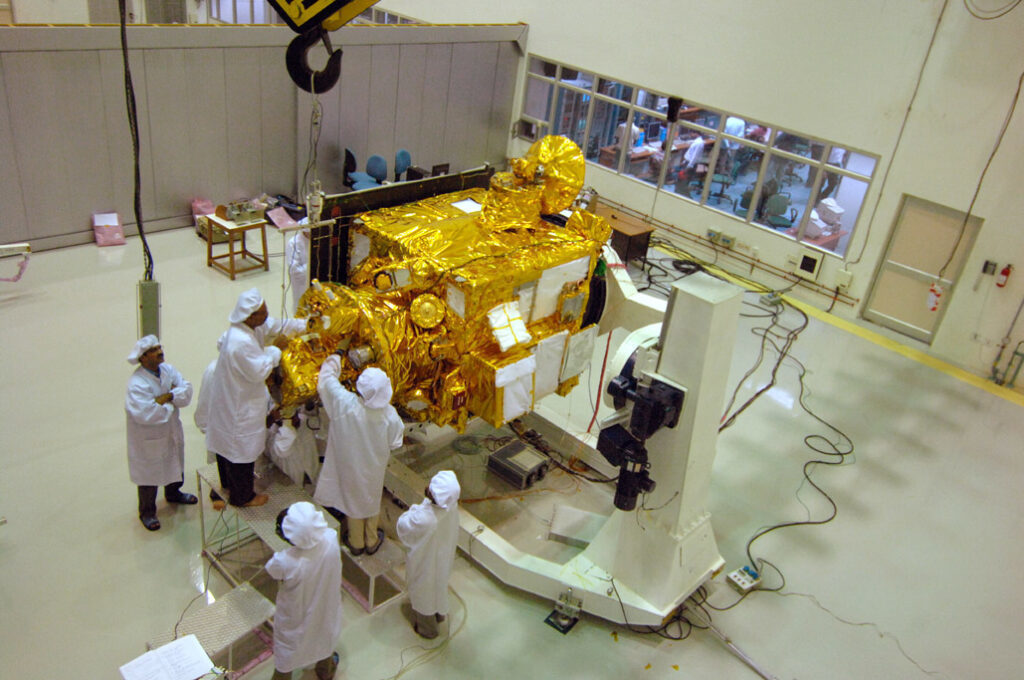
AVATAR Scramjet
This is a long-term project to develop a reusable launch vehicle (RLV) restricted to the launch of satellites. Theoretically, AVATAR would be a cost effective launch vehicle for small satellites and therefore a commercially competitive launch system. A scaled-down technology demonstrator is scheduled to fly c.2008. Recently ISRO successfully tested a scramjet air breathing engine which produced Mach 6 for seven seconds. ISRO will continue research related to using scramjets in RLVs after 2010.
Mars Orbiter Mission
The Mars Orbiter Mission (MOM), also called Mangalyaan is a space probe orbiting Mars since 24 September 2014. It was launched on 5 November 2013 by the Indian Space Research Organisation (ISRO). It is India’s first interplanetary mission and it made it the fourth space agency to achieve Mars orbit, after Roscosmos, NASA, and the European Space Agency. It made India the first Asian nation to reach Martian orbit and the first nation in the world to do so on its maiden attempt.
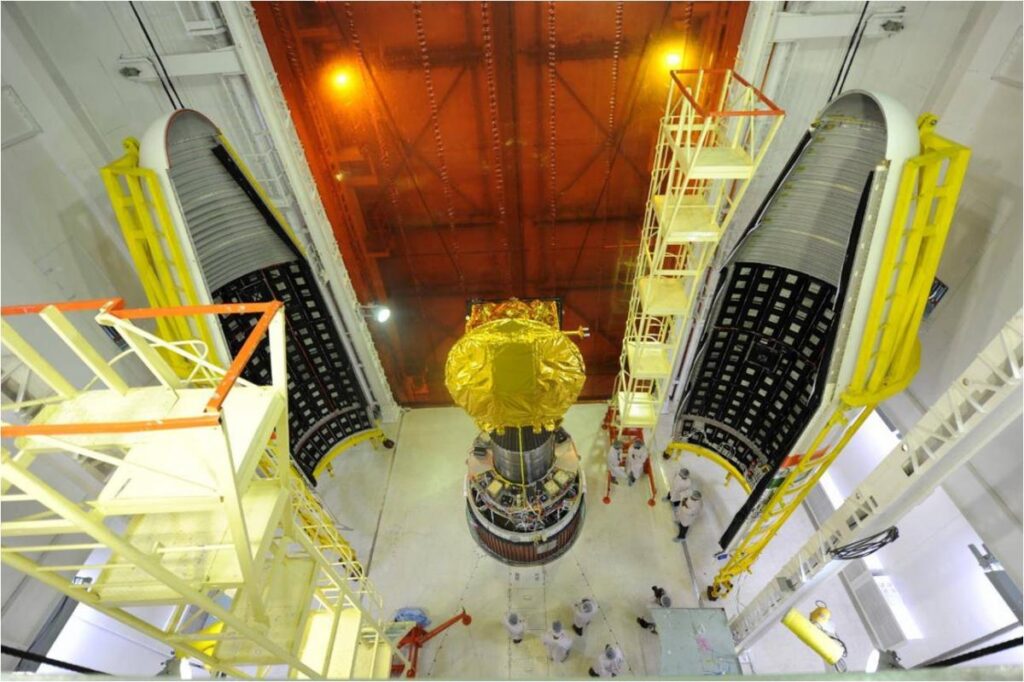
Astrosat
ASTROSAT is India’s first dedicated multi wavelength space observatory. This scientific satellite mission endeavours for a more detailed understanding of our universe. One of the unique features of ASTROSAT mission is that enables the simultaneous multi-wavelength observations of various astronomical objects with a single satellite. It was launched on a PSLV-XL on 28 September 2015. With the success of this satellite, ISRO has proposed launching AstroSat-2 as a successor for Astrosat.
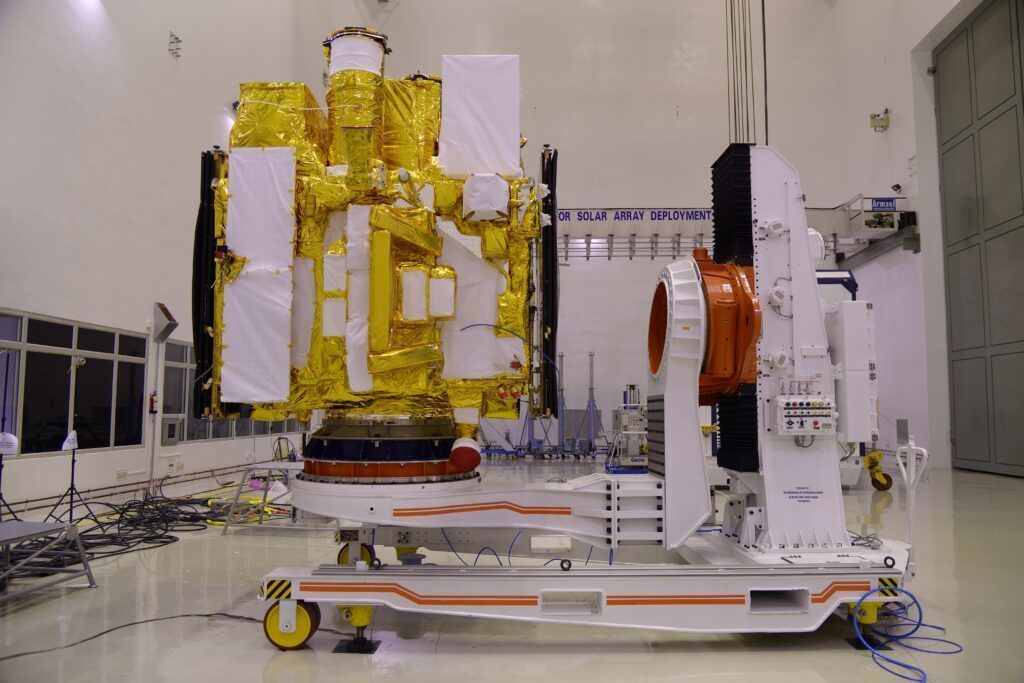
Chandrayaan-2
Chandrayaan-2 is the second lunar exploration mission developed by the Indian Space Research Organisation, after Chandrayaan-1. It consists of a lunar orbiter, and also included the Vikram lander, and the Pragyan lunar rover, all of which were developed in India. The lander and the rover were scheduled to land on the near side of the Moon, in the south polar region, However, the lander deviated from its intended trajectory while attempting to land on 6 September 2019 which caused a ‘hard landing’. According to a failure analysis report submitted to ISRO, the crash was caused by a software glitch. ISRO may re-attempt a landing in 2022 with Chandrayaan-3.
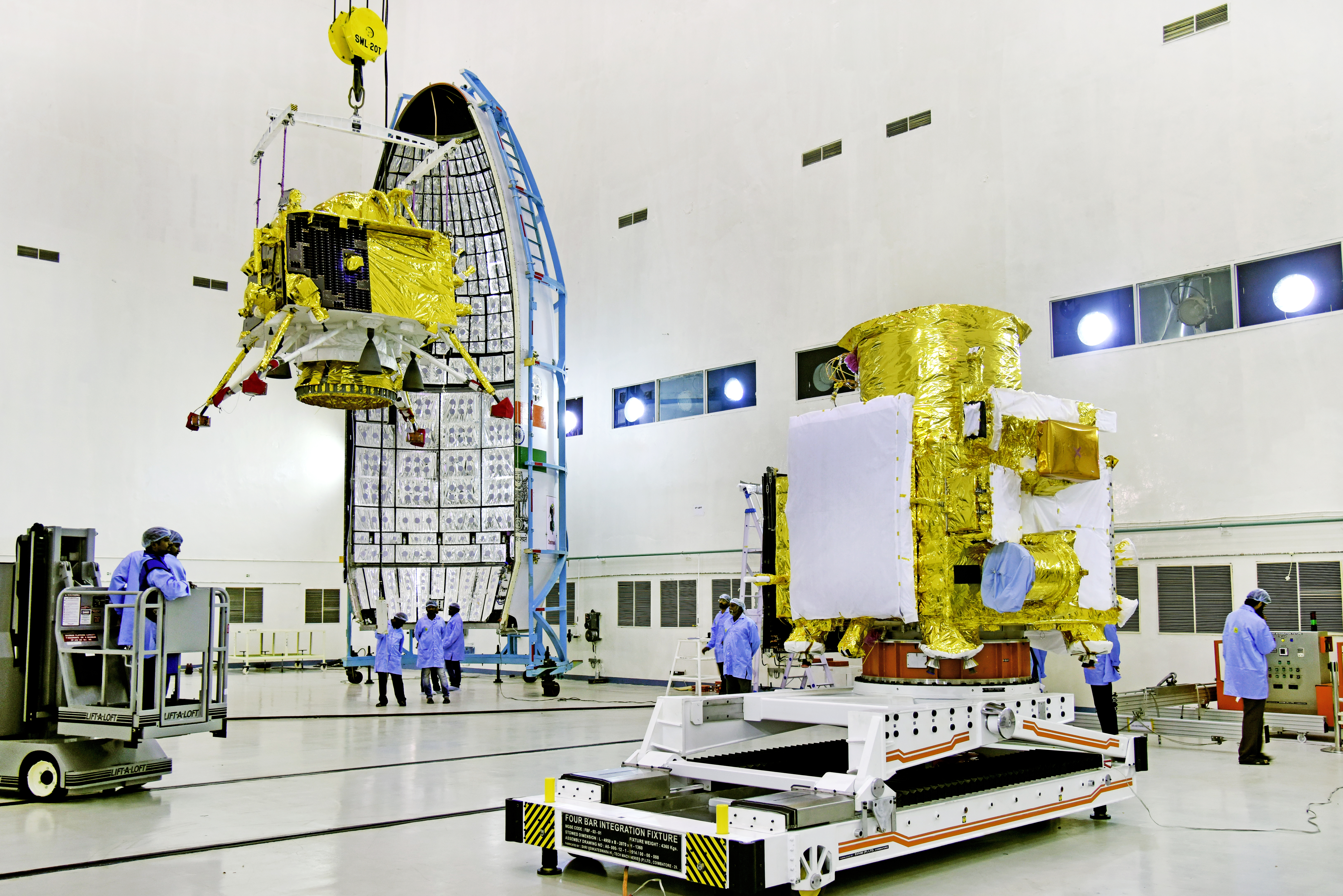
Upcoming Missions
| Mission name | Expected launch | Spacecraft | Details |
|---|---|---|---|
| Chandrayaan-3 | 2022 | Lunar lander, rover | Mission repeat of Chandrayaan-2 with lander, rover and a propulsion module to attempt soft landing of lunar surface. |
| Gaganyaan | 2022 | Crewed spacecraft | Gaganyaan (“Orbital Vehicle”) is an Indian crewed orbital spacecraft (jointly made by ISRO and HAL) intended to be the basis of the Indian Human Spaceflight Programme. The spacecraft is being designed to carry three people, and a planned upgraded version will be equipped with rendezvous and docking capability. |
| Lunar Polar Exploration Mission | 2024 | Lunar lander, rover | Lunar Polar Exploration Mission is a concept mission by JAXA and ISRO to explore the south pole region of the Moon in 2024. The mission concept has not yet been formally proposed for funding and planning. |
| Aditya-L1 | 2022 | Solar observation | Aditya-L1 is the first Indian Solar Coronagraph spacecraft mission to study solar corona in visible and near IR bands. It is expected to be launched by the start of 2022. |
| RISAT-1A | 2020 | Radar imaging satellite | RISAT-1A is a radar-imaging satellite. Its configuration is similar to RISAT-1. It is a land-based mission with primary application in terrain mapping and analysis of land, ocean and water surface for soil moisture. |
| NISAR | 2022 | SAR satellite | NASA-ISRO Synthetic Aperture Radar (NISAR) is a joint project between NASA and ISRO to co-develop and launch a dual-frequency synthetic aperture radar satellite to be used for remote sensing. It is notable for being the first dual-band radar imaging satellite. |
| Mangalyaan 2 | 2024 | Mars orbiter | Mars Orbiter Mission 2 (MOM 2) also called Mangalyaan 2 is India‘s second interplanetary mission planned for launch to Mars by the Indian Space Research Organisation (ISRO) in the 2021–2022 time frame. It will consist of an orbiter, and will not include a lander and a rover. |
| Shukrayaan-1 | 2023 | Venus orbiter | The Indian Venusian orbiter mission is a planned orbiter to Venus by the Indian Space Research Organisation (ISRO) to study the atmosphere of Venus. |
Resources:
- ISRO
- Wikipedia
